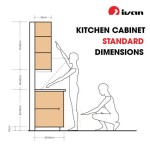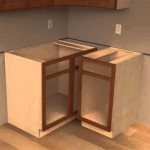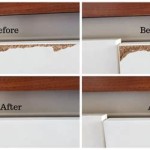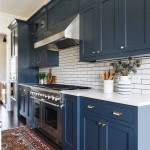Renew Kitchen Cabinets Color: Revitalize Your Space with a Fresh Look
Kitchen cabinets are a major focal point in any home, significantly influencing the overall aesthetic and functionality of the space. Over time, cabinet color can fade, become outdated, or simply no longer complement the desired style. Fortunately, renewing kitchen cabinet color offers a cost-effective and transformative solution to revitalize the heart of your home. This process extends beyond a simple coat of paint; it entails careful preparation, selection of appropriate finishes, and meticulous application, ensuring a durable and visually stunning outcome.
1. Assessing Your Cabinets and Defining Your Goals
Before embarking on a cabinet color renewal project, a thorough assessment is crucial. Examine the existing cabinets, noting their condition, material, and current finish. Are they made of wood, laminate, or a combination? Are there any cracks, chips, or scratches? Are they painted, stained, or varnished? Understanding these factors will guide the selection of appropriate renewal methods and materials.
Next, define your desired outcome. What color palette are you drawn to? Do you prefer a classic and timeless look, a modern and sleek aesthetic, or a bold and vibrant statement? Consider the existing décor of your kitchen, including the backsplash, countertops, and flooring, to ensure harmony and cohesiveness in the final design. Research color trends and gather inspiration from sources like design magazines, websites, and social media to solidify your vision.
2. Preparing Your Cabinets for Color Renewal
Proper preparation is essential to achieve a smooth and durable finish. This involves thorough cleaning, sanding, and priming, ensuring a suitable surface for the new color. Start by removing all cabinet doors and drawer fronts, carefully labeling them for reinstallation. Clean each surface with a degreaser and allow them to dry completely. For painted cabinets, use a fine-grit sandpaper to lightly smooth out any imperfections and enhance adhesion. For stained cabinets, consider stripping the existing finish with a chemical stripper, following manufacturer instructions diligently.
Once clean and smooth, prime the cabinet surfaces with an appropriate primer. Primers create a uniform base for the new color, promoting adhesion and preventing bleed-through from the underlying material. Select a primer compatible with your chosen paint or stain, considering the specific characteristics of your cabinets. Allow the primer to dry completely before proceeding to the next step.
3. Choosing the Right Color and Finish
With the cabinets prepared, the exciting part begins: choosing the right color and finish. Consider your preferred style, the existing décor, and the overall mood you wish to create. Light colors contribute to a sense of spaciousness and brightness, while darker shades can evoke a cozy and intimate atmosphere. Opt for a color that complements your countertops, backsplash, and flooring, creating a cohesive and visually pleasing design.
For painted finishes, explore a range of options like satin, semi-gloss, and high-gloss, each offering distinct visual and practical qualities. Satin finishes offer a subtle sheen, providing a balanced look between flat and gloss. Semi-gloss finishes provide greater durability and are easier to clean, while maintaining a pleasant sheen. High-gloss finishes create a dramatic and sophisticated look but may accentuate imperfections. For stained finishes, select a stain color that complements the wood's natural grain and enhances its beauty.
4. Applying the New Color with Precision and Patience
Once the color and finish are chosen, applying the new color requires precision and patience. Use high-quality brushes or rollers specifically designed for cabinet painting. Apply thin, even coats, allowing each coat to dry thoroughly before applying the next. For painted surfaces, two to three coats are generally sufficient to achieve a smooth and opaque finish. For stained surfaces, apply the stain according to manufacturer guidelines, ensuring even coverage and consistency.
After the final coat dries, consider applying a protective topcoat, such as polyurethane or varnish. Topcoats enhance durability and protect the color from scratches, stains, and UV damage. Choose a finish that complements the chosen color and complements the desired level of sheen. Allow the topcoat to dry completely before reinstalling the cabinet doors and drawer fronts.

Cabinet Refacing Vs Painting Which Is Right For You

Renew Your Kitchen With Cabinet Refinishing H D F Painting

How To Update Your Kitchen Cabinets Without Replacing Them Real Estate U S News

25 Easy Ways To Update Kitchen Cabinets

3 Ways To Update Kitchen Cabinets On A Budget Woodworks Refurbishing

Painted Kitchen Cabinet Ideas Architectural Digest

25 Easy Ways To Update Kitchen Cabinets

How To Do A Kitchen Makeover Cabinet Doors N More

10 Simple Ideas To Update Your Kitchen Cabinets Jenna Sue Design

20 Most Popular Kitchen Cabinet Paint Color Ideas 10 Diy Solutions To Renew Your Kitch Remodel Small Painted Cabinets Colors Renovation
Related Posts








